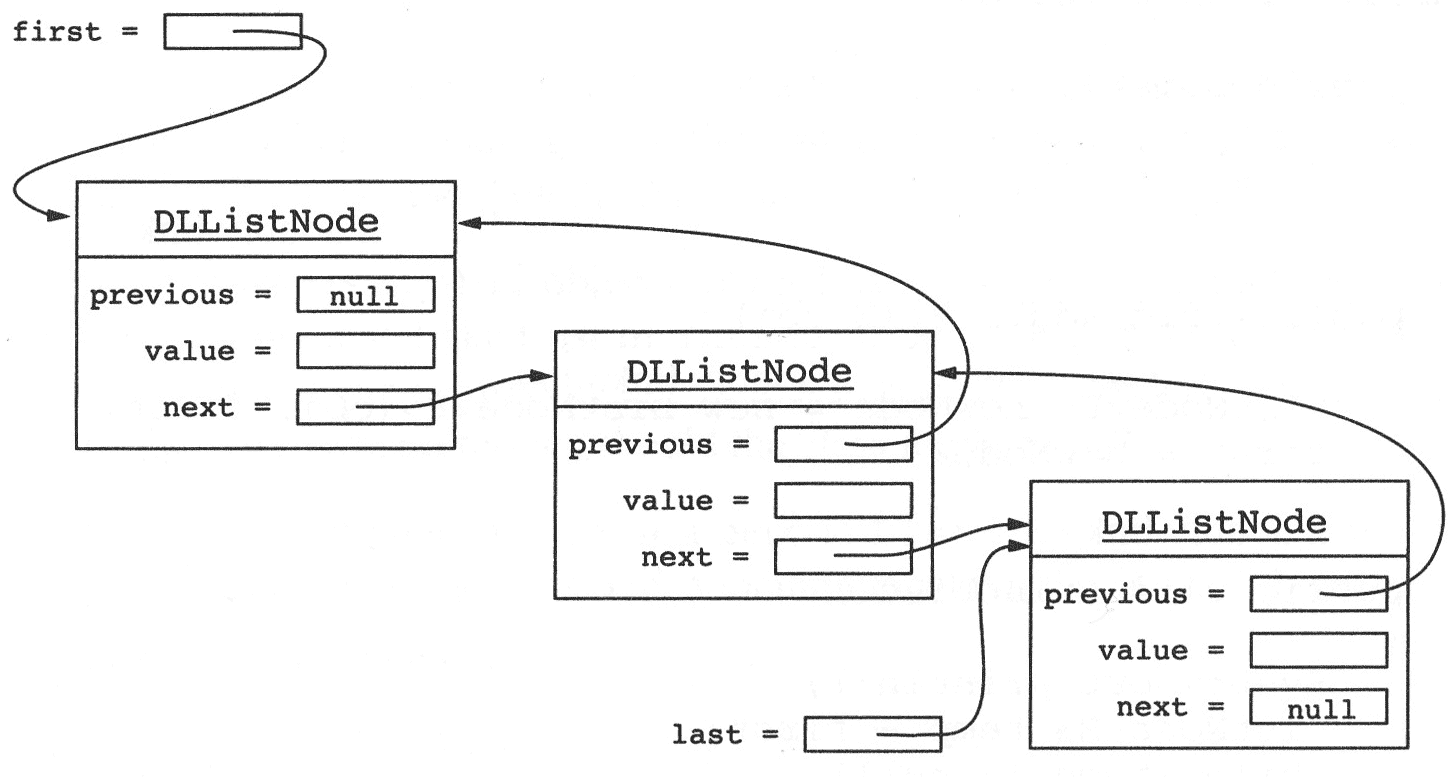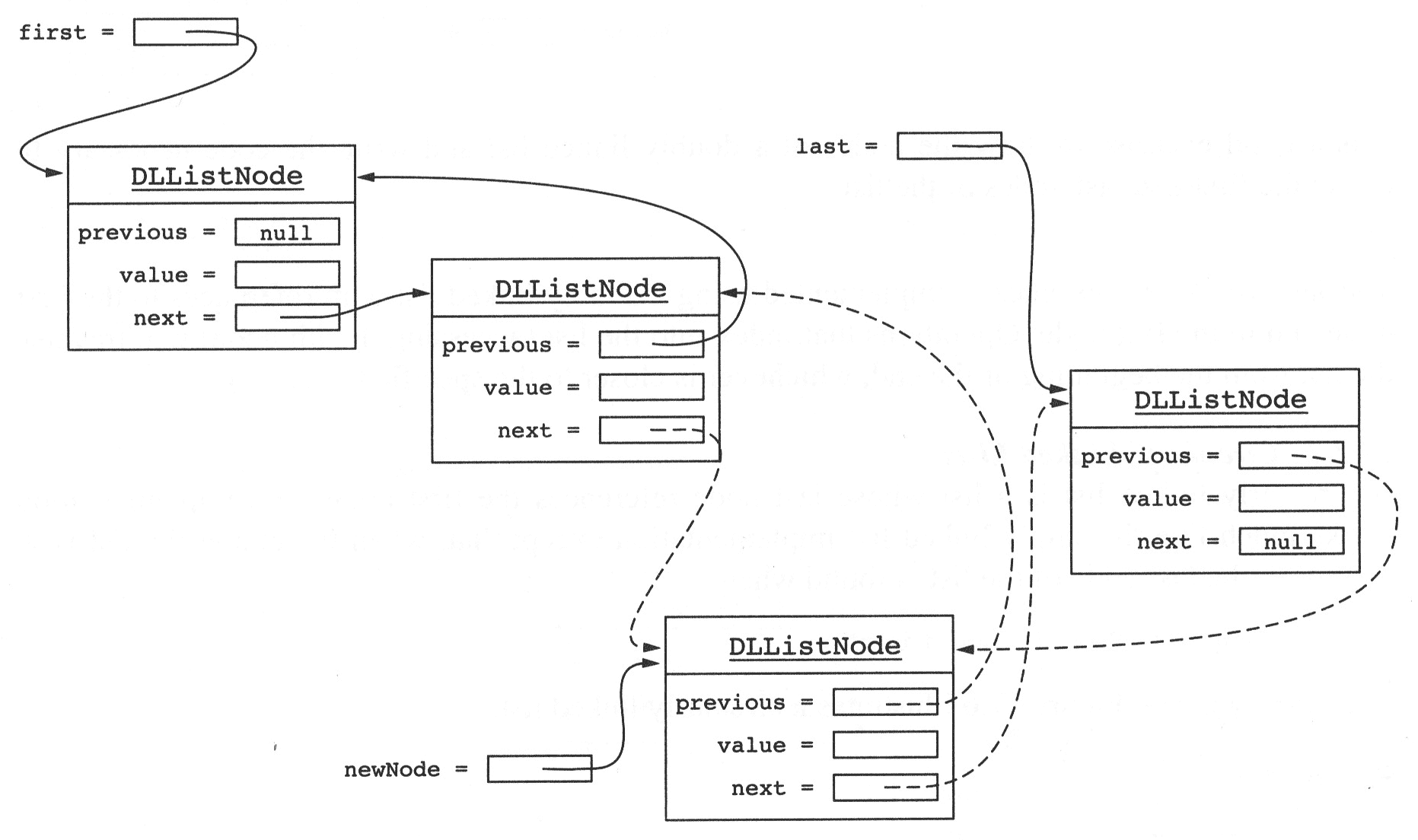In addition to linked lists that have a next field referencing the
next node in the list, we can have a doubly linked list. In a doubly
linked list, the node contains a value, a reference to the next node in
the list, and a reference to the previous node in the list.
-
Suppose our ListNode class were modified to be a DLListNode class. The
class definitions below represent the modifications to the ListNode
class to create a DLListNode class. A doubly linked list node is a
linked list node with another instance field.
public class DLListNode<E>
{
private E value;
private DListNode<E> next;
private DListNode<E> previous;
// Constructor:
public DLListNode( E initValue, DListNode<E> initNext, DListNode<E>
initPrevious )
{
value = initValue;
next = initNext;
previous = initPrevious;
}
public E getValue()
{
return value;
}
public DLListNode<E> getNext()
{
return next;
}
public DLListNode<E> getPrevious()
{
return previous;
}
public void setValue( E theNewValue )
{
value = theNewValue;
}
public void setNext( DLListNode<E> theNewNext )
{
next = theNewNext;
}
public void setPrevious( DLListNode<E>
theNewPrevious )
{
previous = theNewPrevious;
}
}
- Figure 29-3 illustrates a doubly-linked list, of type
DLListNode.

Figure 29-3
-
A null value must be placed at each end of the list to signify the end of the data structure. In the diagram, a null is indicated with the diagonal line.
-
A doubly-linked list should have two external references to access the data structure. In the case above, first and last are the two entry points.
-
A doubly-linked list can be traversed in either direction.
-
Inserting values into an ordered doubly-linked list is a similar process to the algorithm used with a singly-linked list. However, the number of reference manipulations will
double. The addition of a new node to a position between two existing nodes will require four reference
hookups.
-
The example below and Figure 29-4 show the adjustments necessary to add A DLListNode to the middle of a doubly linked list.
/*
Adding a node to middle or end of an ordered doubly linked list.
*/
Comparable newValue = (Comparable)newNode.getValue();
DLListNode temp = first;
while ( temp.getNext() != null &&
newValue.compareTo( (Comparable)temp.getValue() ) > 0 )
{
temp = temp.getNext();
}
if ( newValue.compareTo( (Comparable)temp.getValue() ) <= 0 )
{
// Adding to middle.
// Four references must be set.
DLListNode hold = temp.getPrevious();
hold.setNext( newNode );
newNode.setNext( temp );
newNode.setPrevious( temp.getPrevious() );
temp.setPrevious( newNode );
}
else
{
// Adding to end.
// Two references must be set.
temp.setNext( newNode );
newNode.setPrevious( temp );
}

Figure 29-4

